Women’s Fashion Prints Through the Ages
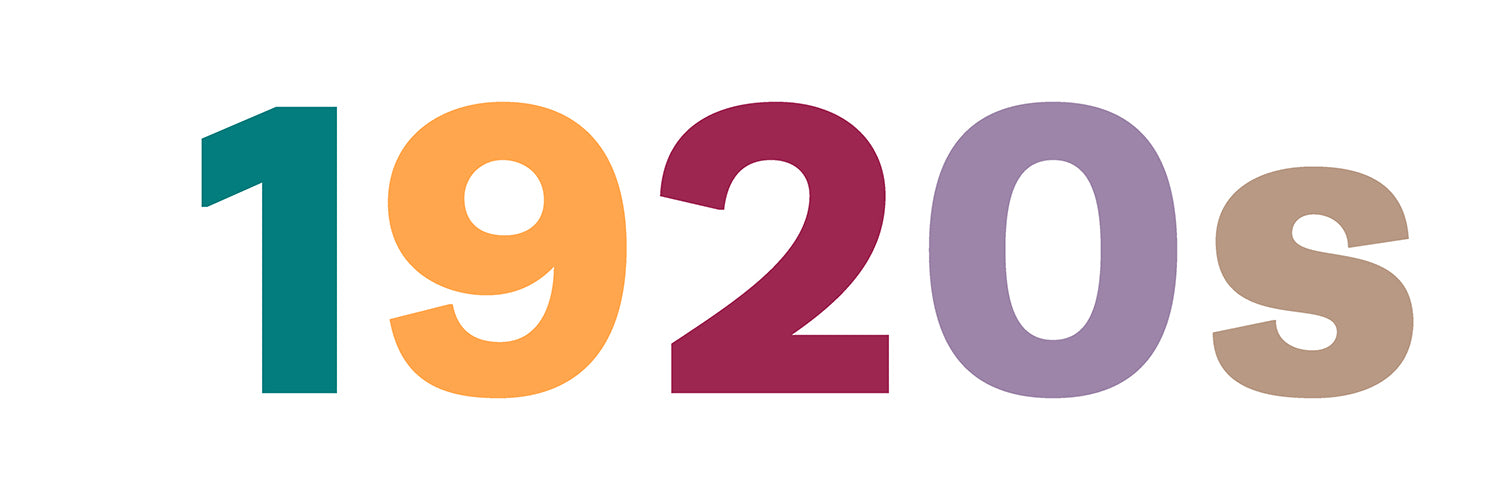

Plaids and large florals light delicate materials solid colours stripes polka dots
Emerald greens orange burgundy violet tan
The 1920’s, full of jazz and referred to as the roaring twenties was the start of fashion changing and becoming more about expression. This decade was the time of changing mindsets as more people owned cars, radios and telephones making communication easier. Wealth growth of this time saw more fashion trends soaring through the wealthy with unique one-of-a-kind pieces being made and worn.
During this time the colours were deep and rich tones of emerald greens, oranges, burgundy and violets. However, there was also tones of neutrals to be worn in every day wear, seeing tan become a staple neutral tone of this decade.
Although at this time of modest knee-length dresses and relaxed fits, it did not stop fashion allowing women to show their true selves. Embroidered dresses were a prominent nightwear and party pieces which saw large embroidered prints of flowers, swirled shapes, and geometric shapes to create a glitz and glamour effect.
Daywear prints were full of floral blooms in large scale similar to the embroidered prints but with a more toned-down daytime aesthetic. Pinstripes and plaids were the everyday wear at the time due to being business smart but also casual enough to wear out. For most of the 1920’s daywear did resort to more neutrals and block colour styles.


Floral embellished prints, zebra, depression US. Joan Crawford. Elegance and glamour
Fun conversational pieces appeared boas, jungle, Eiffel tower
Beige, blue, peaches, pinks, mauves, violets and yellows following into strong colours of teal, orange chocolate and grass greens
Striking colour combinations appeared
In the 1930’s they saw their share of economic issues but mainly the great depression in the US. Meaning that fashion for those who were hit by economic difficulties became a DIY job with a lot of homemade outfits or old clothing being mended and remade into new outfits.
The decade followed on with the modest fashion of long hemlines and looser fits. But although still modest fashion it did not stop the women of the 30’s from showing their true selves in vivid colour schemes and prints. Colours of that moment were strong and some colours did follow on from the 20’s including the violets and oranges, however they saw more peaches, pinks, mauves and yellows coming into the palette, alongside some more earthy tones of greens, beige, and chocolates.
Fabric prints became more prominent through this time particularly fun conversational prints embodying jungles and Eiffel towers to create a novelty approach. Other trends that were high fashion at this time included florals both printed in smaller scales but also embellished florals and shapes for night wear and were usually created using striking colour palettes combinations. Zebra became a print that was focused on for part of the decade as well.
Similarly, to the 1920’s the daywear was more block colours and plain. However, the prints were beginning to shine through in subtle floral prints. The nightwear was where the bright patterns were coming through to grace us with the designs.


Small dot prints, plaid, stripes and checks, small ditsy florals were prominent painted brush style florals
Late 40s saw abstract art and paisley
WWII saw a limited pallet option, prints were made for dresses, playsuits, blouse, and children’s clothing
Colours, primary colours, mint green, aqua green, rose pink, Copenhagen blue, golden yellow
Silk, rayon, cotton, jersey
The 40s were a strange time for fashion with World War II beginning it became harder and harder to create fashion due to limited shortages due to rationing a lot of people similar to the 1930s started mending and making their own clothing to save money. The changes were made to women celebrating during this time, their skirts and hemlines started becoming shorter and it will become in more socially acceptable for women to wear slacks trousers and more masculine fits than before the war. During this time bikinis were also invented for women to wear as after the war finished it became clearer that women played a much more predominant role in society than every before.
During the start of the 40s prints were limited and followed in from the 30s. However, as the 40s neared their end creativity began to strike. Prints were being designed for children and women’s wear for all sorts of garments. We began to see a mixture of small ditsy florals and large abstract florals prints alongside polka dots being more worn while still seeing traditional pinstripes and plaids. Towards the start of the 50s Paisley was beginning to show as by this time designers were changing their perspectives and creating new styles of design.
Fabrics became more affordable and with the technologies always updating they started to become higher quality.
Colours were very bland and neutral up until the mid 40s as an affect of World War II. But once fashion had begun again the colours were outstanding shades of aquas, mints, rose, blues and striking yellows, creating art in fashion which started to show more through this decade.


More freedom in fashion. sportswear, embellished prints, fur made a comeback
Day wear was more solid colours and floral prints. Bright abstract prints
Night wear- peacock blues and hot pinks. Sheer chiffon layered
Colours- greens, turquoise- peacock. Purple and lavender orchid pink
Poodle skirts became the prominent fashion item for all females in the 1950s. But during this decade changes to the fashion items, following in from the 40s, fashion updates the women of the 1950s saw more freedom through their clothing. There was sportswear for males and females to actively wear now. They still followed modest fashion trends, but they did start to suit it to women’s personal styles instead of society’s expectations. Skirts were still longer but blouses and shirts were more form fitting.
Prints were still being embellished into clothing to give personalised style, but fur trimming was also coming into trend. Polka dot remained popular during this time alongside the novelty conversational prints of animals, landmarks, and buildings.
Daywear saw simple stripes, florals and abstract prints paired with block colours for a simple and relaxed look. The 50s saw this decade being colourful and full off self-expression compared to previous years. Nightwear saw hot pinks and peacocks blue make a statement, with the materials such as layered chiffon taking their fashion to the next level.
The most stand out colours of this decade turned away from neutrals and headed in shades of purple in lavender and pink orchid. The blues showed through in peacock, teals and turquoise while blended with an array of green shades.


Patterned tights, leopard print, paisley, tie dye, floral everything, peace symbols. Plaids
Colours- Bright colours and earth tones. Grape, plum, wine red, garnet, olive green. Neon pink
Conran fabrics, mohair, weavers, heals
Architecture was a huge influence in silhouettes
Many fashion trends were reflected movements of the time
The 60s became the decade that prints became the focal point in fashion. Everything came in printed styles from tights to hats and everything in between.
The decade of the hippie and flower power movements of peace, the fashion trends reflected the political and social movements of the decade. Paisley was the prominent print of this decade. It was printed everywhere and with so many paisley prints it was easy to make each fashion item look unique and individual. Tie dye fabrics started to emerge into life during the decade as a fit of protest art. Not every person wanted to wear tie dye or paisley which saw plaids and florals stay in fashion from previous decade. However, they featured a 60s revamp of being bright and colourful.
Fashion silhouettes at this time saw skirts above the knee in an A-line silhouette and each skirt features bright prints to match the trends. Pairing the shorter skirts with go-go boots in shiny patent leathers to add more colour to an already bright decade. The architecture of the moments played a large influence in the geometric prints and styles of this time as advancements in construction and technology.
The colours of the 60s were energetic bright and earth tones. It saw some natural dyes becoming used more to fit into the movements of the time. Neon pinks, bright grass green, plum, wine, grape and olives were the key tones but there was also highlights of yellows and luxurious blues.


Floral prints, animal print fur, folksy prairie print, chevron stripes, Paisley, geometric flat florals
Continuous hippie trends
Emerald, apple, and bottle green
Saturday night fever disco
Taking a turn in colour choices the 70s featured a more earthy palette with less brights. Featuring mustards, yellows, emeralds, apple, and bottle greens along with rusts and natural shades of oranges which continued throughout the 70s.
The hippie trends continue to be popular throughout the 70s as they continue to see social and political movements of the Vietnam war, women’s rights, LGBTQ rights, and environmental changes. This saw the 70s take a stand for change.
The paisley prints stayed popular due to popular bands such as the Beatles, they also were popular at wearing chevron stripes which motivated the fashion prints in that way also. During this time music was a powerful form of communication as it was affordable and accessible to everyone but also the options for music choice were growing from punk, disco, rock and jazz and with singers like Elton John being highly fashionable it made changes to how fashion was being viewed as a self expression.
Florals were popular during the 70s however they were popular in an array of styles. They were shown in ditsy styles but also through a combination of ditsy and flat, large prints especially on trousers matching to the colours of the decade. However, to match in with more earthy tones or rusts and oranges they did feature a lot of prairie style prints. Geometrics were popular also during this time however in an abstract and layered look which made each print unique in its own way.
Wide leg jeans, blouses, halter necks, and sweaters were popular during the 70s along with corduroy and cord trousers. The trousers slimmed the waist but elongated the legs to create a strong silhouette in women. The nightwear was primarily floaty dresses that created movement while dancing.


The 80s saw a change in fashion as it became electrifying
Cartoon style, Hawaiian shirts, costume approach, neon spandex, animal prints, geometric prints
Array of colours. Exotic
At the start of the 80s colours were more subdued but changed as the 80s went on
Resentment to feminine clothes saw change to more fitted clothing
The 80s was the decade of Lycra, spandex and velour. It was an electrifying decade of colours and prints which were creating striking fashion for everybody which gradually turned to be more subdued as the decade went on. At this time the 80s style involved a lot of activewear though spandex shorts and unitards which were usually worn with an oversized sweatshirt or crop tops to create layers. Women were becoming more prone to wearing shorter and tighter clothing as they were influenced from music due to the technology changes making it easier to produce and edit music and make tv and radio like MTV possible. During this time bands that were popular would create their own style which would influence the fashions through ripped jeans and leather jackets also.
Prints that were popular were Hawaiian and costume prints. Animal prints and geometric which were paired with neons to create bright and eccentric looks. The 80s colour themes featured so many different options but the most popular was the neons. Every look and item featured highlighter shades of pink, green, yellows and oranges which were shown through all clothing items. But they weren’t the only popular colours as black and white were popular along with burgundy and indigo to tone down the brights as not everyone wanted neons.
The 80s saw a resentment to the female clothing that came previously of being modest and feminine. The silhouettes of the time were very different as sometimes they focused on fitted and tight looks, whereas other were baggy and balloon looks. But sometimes the featured a combination that could be achieved through layering of clothing and belts. Celebrities such as Madonna, Cyndi Lauper , Brooke shields and molly Ringwald were the staple fashion icons of the 80s.


Hawianna, pattern blocking, shiny holographic, oversized prints, zebra, crushed velvet print, Camo but in non-green.
Bright stripes, asymmetrical stripes
Spice girls
Explosion of bright colours
In the 90s was the decade of chick flick rom coms, films that to this day we all watch and find comfort in. Entertainment during that time had changed to create deeper story lines to fit a bigger audience.
Technology changed in the 90s which lead to much more awareness of how the technology can affect fashion. Styles such as acid wash jeans and crushed velvet began appearing due to how it could be made in larger scales without doing it at home yourself. Pop culture began affecting the fashion industry majorly as the traditional styles of feminine silhouettes were gone and it was all about expression and being just like the biggest stars. The icons that were actively influencing the 90s throughout were Gwen Stefani, Jennifer Anniston, Drew Barrymore, Madonna, and Alicia Silverstone. They were fashion icons at how to express themselves on the daily.
The prints of the time continued from some 80s trends of Hawaiian prints and oversized prints which were popular throughout the 90s. Other prints which came around throughout the decade included zebra and pattern blocking along side camouflage prints but not in green. Bright stripes, asymmetrical shapes and shiny holographic also peaked through the 90s to be part of the fashion trends.
The silhouettes of the 90s saw mini skirts and blazers becoming a key item with the movie Clueless being so popular. Slip dresses, baby graphic tees, bomber jackets and loose-fitting jeans all paired with patterned scrunchies to make an outfit complete.


Saw a divide through the years instead of the styles early 2000’s saw late 90’s influence, low rise jeans and crop tops but also boho vibes paisley maxi skirts
Designer logos were printed all over
Early 2000s saw a futuristic approach
The early 2000s were a follow on from the 90’s, the trends stayed very similar. The fashion of that moment was continued fits of female expression and focused on fitted tops and tanks, miniskirts, and also low-rise jeans. The early 2000’s saw cargo pants and cropped jackets paired with graphic Tee’s. This generation of youths were heavily influenced by music genres which created subcultures among consumers, indie music listeners style was different to emo, ravers, and rap. The styles and colour palettes of each genre would reflect the music choices of the youths.
Trends that were fashionable at that time focused on accessories alongside the clothing. One of the most popular was Von Dutch trucker hats inspired by Britney spears. Many styles of these hats became popular and each one was bedazzled with rhinestones and prints. Brands such as Bape during this time started an all over prints trend on all items of clothing, the prints usually focused on graphic prints and were known for featuring dollar signs and diamonds. One larger trend that began to appear throughout the 2000’s, that was influenced from some 80’s prints was street art and graffiti spray prints on t-shirts and jeans.
As the 2000’s went on graphics stayed on trends for prints. However, it saw a pull towards sporty styles and bohemian light florals paired with an earthy palette featuring blush pinks, lavender and lime greens. Leopard print was a popular trend and would be printed all over garments for a statement looks.


Animal print and ditsy animal, neon, graphic prints
The decade of 2010 saw many other decades influences come back to grace the markets with their presence. The 80’s trends of neon and graphic prints came back throughout the decade to bring luminescent raver styles back into fashion. 70’s folksy prairie styles were reinvented to create vintage fashions back in style as the colours were very similar alongside the overall fits from the 70’s decade.
The 2010’s were a decade that pushed for practicality in fashion. Athleisure became a statement piece which saw comfort being pushed as a primary option especially in females. Pockets became more common in items in order to add to the purpose of fashion. During this decade, diversity and inclusivity became a staple push point in brands to ensure they were inclusive of sizes and skin colours. Body positivity has become more important now more than ever including fashion to suit each body and be available for each person. With technology and social media becoming more prominent it has become easier and quicker for fashion trends to spread globally and share influence.
Fashion in this time has faced a lot of neutral and plain clothing going for minimalism style. However, there are prints still available and in trend. Ditsy florals stayed strong through this decade as it was influenced by many decades that have come before. This is the same for animals both large and ditsy scales, and also large brush strokes and abstract prints. Graphic t-shirts have stayed popular and in everybody's wardrobe and are constantly being updated to fit in with each season’s trends of graphic wording, pictures, and styles.
REFERENCES
1920s Fabrics and Colors in Fashion (vintagedancer.com)
1930-1939 | Fashion History Timeline (fitnyc.edu)
1930s fashion - Clothing styles & History - 1930s women's fashion - Blue17
1940s Fabrics and Colors in Fashion (vintagedancer.com)
1950-1959 | Fashion History Timeline (fitnyc.edu)
1950s Fashion History – Vintage Vixen Clothing LLC --- 941.627.2254
1950s Fashion: Styles, Trends, Pictures & History (retrowaste.com)
30 Vintage Fashion Trends That Need to Make a Comeback (alot.com)
1960s Textile Designers - Victoria and Albert Museum (vam.ac.uk)
Fashion History- The Look of the 1960’s | by Kalyani Kala | Medium
70s Fashion History for Women and Men - What was popular in the 1970s? (styleimagination.com)
1970s Fashion Trends for Women - Bellatory
20 Fashions That Prove The 1980s Was The Greatest Decade | Eighties Kids
1980s Fashion: Styles, Trends & History (retrowaste.com)
http://tamumusicofthe80s.blogspot.com/2012/11/how-80s-music-changed-fahsion-hailey.html?m=1
11 Patterns & Prints That Were All Over Your Clothes In The '90s — PHOTOS (bustle.com)
1990s Fashion: Styles, Trends, History & Pictures (retrowaste.com)
21th Century Fashion History: 2000-2010 | The Fashion Folks
Early 2010s Fashion Trends That Are Already Coming Back in Style (insider.com)
2010s Fashion: The Grand Narrative of a Decade | ShilpaAhuja.com
 |
Amy Davidson |
| Amy Davidson is a newly graduated textiles designer from Scotland, who loves to travel, the colour orange and hairbands in as many colours and prints as she could possibly get her hands on. Her favourite style of print to work with is anything that’s bold, colourful, and tropical! |
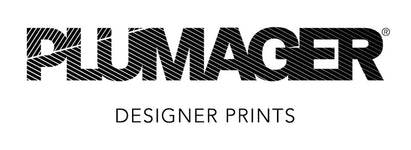

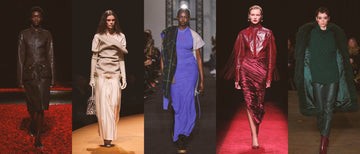
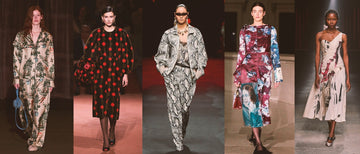
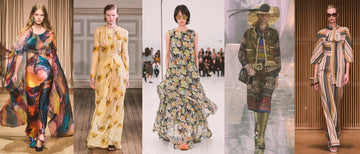

3 comments
Love the prints from the 30s and 40s best, they are so pretty! I’m happy there are so many vintage prints now!
fun read wish i lived in the 70s
Such a fun article! I also think of the Spice Girls when I think of the 90’s!! :)